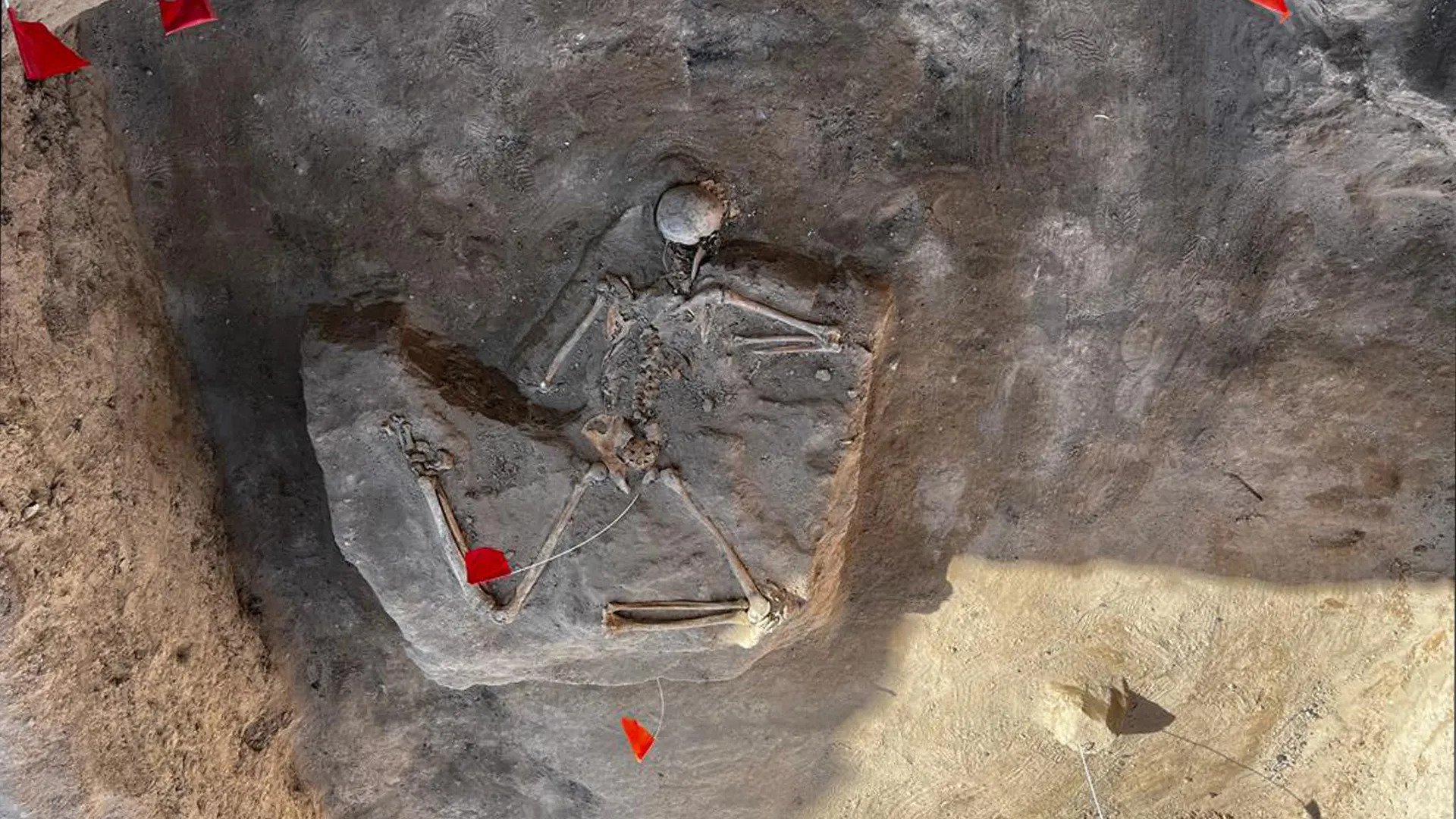
In Turkey, archaeologists made a new discovery of a very well-preserved skeleton, found at the Ayanis Castle, located in the country’s Van province in Eastern Turkey, bordering Iran. They found the remains of a high-status person who might have died during an earthquake about 2,700 years ago.
This person was wearing fancy jewelry and was surrounded by weapons and special items like double-sided inscriptions and seals.
It’s clear that this individual enjoyed a very luxurious life in the 8th century B.C. until they tragically perished in a fortress. The individual was found still holding onto their personal belongings, according to Mehmet Işıklı, who leads the Ayanis excavations and is a professor in the Atatürk University Department of Archaeology.
The Ayanis fortress was an important site for the Ancient Urartian civilization. This is where the skeleton was discovered. The Urartu Kingdom existed during the Iron Age, from the 9th to 6th centuries B.C. Their territory covered areas we now know as Armenia, Western Iran, and Eastern Turkey, according to Live Science.
For a while now, experts have assumed that Ayanis fell due to an earthquake and a subsequent fire. However, since experts began digging there in the late 1980s, they haven’t found much proof in support of this idea of an earthquake contributing to the city’s decline.
Van, Turkey
Restoration work is carried out at Ayanis castle, the walls of which have been unearthed during excavation works. Works on the building, which was one of the most magnificent structures of the Urartu kingdom, has been under way for 31 years 📷 @obilgin65 pic.twitter.com/yjy3shrEAi
— Türkiye_Pics 🇹🇷 (@Turkey_Pics) July 28, 2020
Mehmet Işıklı, who is in charge of the excavation, mentioned in an email to Live Science that discovering this skeleton provides especially significant proof in support of the earthquake theory.
Anthropological analysis of the well-preserved skeleton
Experts will closely examine the skeleton to determine the person’s age and sex. They will also attempt to see if there are any remains of the person’s brain, although some researchers disagree on whether any such soft tissue might still exist.
A double-sided inscribed cuneiform tablet was also discovered alongside the skeleton. Soon, experts will translate it and report their findings, revealed Live Science.
Depending on the contents of the inscription, we might learn about the person’s position and status in the Urartian society. It could also provide important information about what was happening socially and politically in Ayanis during that time.
🏛️ Excavations carried out at Ayanis Castle for 36 years shed light on Urartian period pic.twitter.com/bOGTcbo66v
— Anadolu English (@anadoluagency) August 10, 2023
Mehmet Işıklı mentioned that both the skeleton and skull are in good shape. Based on earlier information, there may even be some chemically-disintegrated parts of the brain left.
Erkan Konyar, an associate professor at Istanbul University who specializes in Ancient History and isn’t part of this discovery, cautioned that brain tissue usually doesn’t endure in the Van region’s climate.
See all the latest news from Greece and the world at Greekreporter.com. Contact our newsroom to report an update or send your story, photos and videos. Follow GR on Google News and subscribe here to our daily email!



